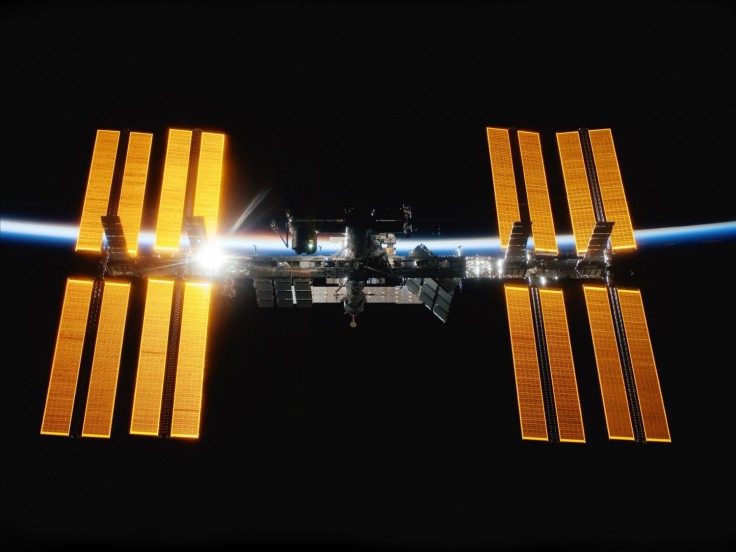
That fearsome incident on the International Space Station on Thursday, July 29, was even scarier than what was originally reported.
A New York Times report revealed the full details surrounding the inadvertent firing of a Russian module's thrusters that literally sent the ISS for a spin.
International Space Station Accident: Russian Module Thrusters Made ISS Do 540-Degree Backflip
According to the report that featured an interview with NASA flight director Zebulon Scoville, who was manning mission control as the incident transpired, when Russia's Nauka module docked to the ISS, Nauka's thrusters started to fire and this made the ISS roll backwards. Russia's flight controllers would eventually regain control of the spacecraft, but for a tense 47 minutes, the ISS seemed in real danger..
NASA first reported in a press conference later Thursday that the ISS merely moved 45 degrees. But Scoville told the New York Times it was "a little incorrectly reported." The space station, he said, actually turned to about 540 degrees. The ISS then went upside down before it did a 180-degree forward flip to restore its original position.
Read also: International Space Station Location Tracker: How to Spot ISS and Take Stunning Photos of It!
A NASA spokesperson, meanwhile, clarified the inconsistency in a Gizmodo interview. The representative said the initial value of 45 degrees was given based on real-time reports of the incident as it happened--when Nauka was still firing thrusters while flight controllers were fixing the station's orientation. Scoville's value of 540 degrees was only confirmed "after the post-event analysis was complete," the spokesperson stated.
While NASA reiterated that none of the seven ISS crewmembers were in any danger, Gizmodo report quoted Harvard-Smithsonian astrophysicist Jonathan McDowell as saying that it was "one of the more serious incidents in the 24-year-history of the ISS." McDowell said the loss of altitude control "risks breakup" of the ISS structure.
Thursday was actually Scoville's day-off, but as the Russian Multipurpose Laboratory Module (MLM) was docking, he had to fill in for flight director Gregory Whitney who needed to join a meeting. At around 12:34pm EDT, an error message related to the station's four gyroscopes--which maintain the ISS's altitude control--began to appear.
Scoville first thought it was a false alarm, but when he said, he "saw all the ice and thruster firings," he realized it was "a real event." While he said he was uncertain of what to do at first, Scoville set those thoughts aside and worked on the problem,
ISS Accident: Controllers Could Not Turn Off Thrusters Causing ISS Spin
As Nauka's thrusters fired, pulling away from the ISS it has already been attached to, the situation had turned for the worse since Scoville or any ground controller could not turn those thrusters off. Scoville's Russian mission control counterparts informed him that Nauka could only follow commands from a ground station in Russia. And, the next pass of the ISS over Russia would be 70 minutes away.
Attached to the ISS underbelly, Nauka started to bring the aft section down that led it to go on a backflip at a rate of 0.56 degrees per second, which was first unnoticeable but could lead to serious structural damage and position the ISS antennas away from their intended targets. The New York Times report revealed ground controllers lost communication with the ISS twice--once for four minutes and another for seven minutes. Its solar arrays and radiators were locked to avert damage.
As they were unable to disable Nauka's thrusters, Russian controllers fired thrusters attached to the Zyezda Service Module. As this might not be enough to correct the situation, the controllers also fired thrusters on a Progress cargo ship docked in the station. This "tug-of-war" between thrusters halted when Nauka's thrusters stopped firing. As they regained altitude control, flight controllers were now able to correct the ship's position.
ISS 540-Degree Spin Not a Big Deal, Says NASA
NASA revealed that the space station's 540-degree spin was not really a big deal. In the Gizmodo report, the NASA spokesperson said the "greater degree of rotation doesn't change the outcome," and that "all other station systems responded normally to the event and resumed regular operations once attitude control was regained."
According to Scoville, this was the first time he had to declare a "spacecraft emergency," a Space.com report said.
Russian flight director Vladimir Solovyov attributed the incident to a "short-term software failure" wherein a "direct command was mistakenly implemented to turn on the module's engines for withdrawal."
Here's a video of Russian astronauts giving a tour of Nauka:









